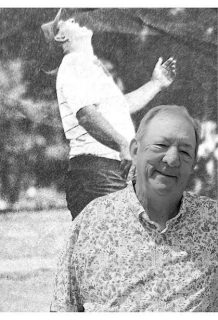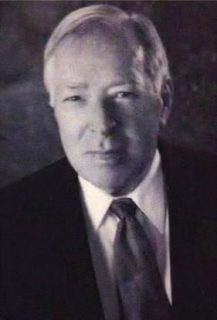New York eased gun law hoping Supreme Court would drop Second Amendment case – but that hasn’t happened yet
Published 9:27 am Monday, August 12, 2019
WASHINGTON – As the nation renews debate over gun control, the Supreme Court must decide whether to press ahead with a Second Amendment case it has accepted for the coming term, its first in a decade.
Gun-control groups operate under a no-news-is-good-news approach to the Supreme Court, leery of giving a strengthened conservative majority the chance to expand gun rights and weaken restrictive laws.
Trending
In New York State Rifle & Pistol Association v. City of New York, which the court accepted in January, the city and state of New York appear to agree. They have essentially surrendered, changing the restrictions at issue even though the city successfully defended them before a district judge and a federal appeals court.
New York said it has given those who hold licenses to have guns on their premises exactly what they asked for – a greater ability to transport their weapons through and outside the city – and there no longer is a controversy for the Supreme Court to settle.
“New legislation or regulations giving plaintiffs all they seek moots the case,” wrote Zachary W. Carter, corporation counsel for New York City.
He cited Chief Justice John Roberts Jr.’s dissenting opinion on a mootness question in an unrelated case in 2016, in which he said the court may not rule on a plaintiff’s entitlement to relief simply because he “won’t take ‘yes’ for an answer.’ ”
Those who brought the challenge said the city should not be allowed to get rid of the case and the constitutional questions it raises by making a last-minute change after years of resistance.
The court has told both sides to continue filing briefs and that it will consider New York’s request to dismiss the case on Oct. 1, a week before the new term begins.
Trending
Any Supreme Court decision on guns will be magnified in a presidential campaign and with the backdrop of the mass shootings that have plagued the country. Whether the recent attacks in El Paso, Texas, and Dayton, Ohio, will affect the justices’ decision is anyone’s guess, experts said.
“They’re human beings and this can’t help but color a little bit how they see this case,” said Adam Winkler, a UCLA law professor who has written extensively about Second Amendment litigation.
On how to decide when a case is moot, he said, “I think the Supreme Court has enough wiggle room to go in either direction.”
The New York restrictions were unique – no other jurisdiction has such strict rules on transporting a weapon. But the case is significant because it marked the first accepted challenge since the Supreme Court recognized an individual right to gun ownership in 2008’s District of Columbia v. Heller and ruled two years later that the Second Amendment governed state and local gun laws as well as those adopted by the federal government.
Since then, the court has declined to hear challenges to all manner of gun-control measures, such as bans on certain military-style weapons and state restrictions that make it extremely difficult to obtain a permit to carry a gun outside the home.
In some cases, it has upheld gun restrictions, prompting complaints chiefly from Justice Clarence Thomas about the way his colleagues consider the Second Amendment. “We treat no other constitutional right so cavalierly,” he wrote in 2016.
Justice Neil Gorsuch has joined Thomas in saying the court should take more Second Amendment cases. But the momentum really has increased since Justice Brett Kavanaugh replaced Justice Anthony Kennedy last year.
Kennedy was part of the five-member Heller majority, but his vote was a shaky one, according to the late Justice John Paul Stevens’ memoir. Stevens said he believed Kennedy insisted on language in the opinion that has been cited by lower courts in upholding state and municipal restrictions.
Kavanaugh, by contrast, was strongly endorsed by the National Rifle Association. In 2011, as a judge on the U.S. Court of Appeals, he dissented from a decision upholding the District of Columbia’s ban on some semiautomatic rifles and a gun registration requirement.
He reasoned that while the Heller decision agreed that government may prohibit “dangerous and unusual” weapons not in common use, the guns at issue did not meet that definition.
“It follows from Heller’s protection of semi-automatic handguns that semi-automatic rifles are also constitutionally protected and that D.C.’s ban on them is unconstitutional,” Kavanaugh wrote.
New York’s approach to get rid of the case is similar to what some gun-control advocates had hoped the District of Columbia would have done with its restrictive handgun policy that led to the Heller decision. The district’s mayor at the time, Adrian Fenty, decided to press ahead after the District of Columbia Circuit ruled against the city, resulting with the Supreme Court finding an individual right to gun ownership for protection in one’s home.
The gun violence reform movement thought the District of Columbiashould amend the law rather than take it to the Supreme Court, Winkler said. “The result was disastrous for them,” he said.
If the court proceeds with the New York case, it could decide it very narrowly, or it could resolve long-standing questions about the right to a gun outside the home.
The New York gun association, represented by Paul D. Clement, who was solicitor general under then-President George W. Bush, said the city’s “undisguised effort to avoid a precedent-setting loss and to frustrate this court’s discretionary review falls short by every measure.”
The city battled for years and relented only when the Supreme Court took the case, the association argued.
New York officials said the gun owners should simply acknowledge that they won.
“A primary purpose of litigation like this (is) to pressure the governmental actors to agree to a demand,” the city wrote. “All that matters is whether the plaintiffs’ purported injuries have been redressed. If so, there is no longer a case or controversy.”
If the court decides there is no longer a reason to hear the New York case, there are others in the wings.
Some more clearly present the issue of the right to carry a weapon outside the home. There are still legal challenges to President Donald Trump’s decision to ban bump stocks. There is a case challenging California’s Unsafe Handgun Act.
Recently, Remington Arms asked the court to review a Connecticut Supreme Court ruling that a lawsuit brought against the company by a survivor and relatives of victims of the Sandy Hook Elementary School shooting could go forward. The company said it is protected under federal law from such suits.






